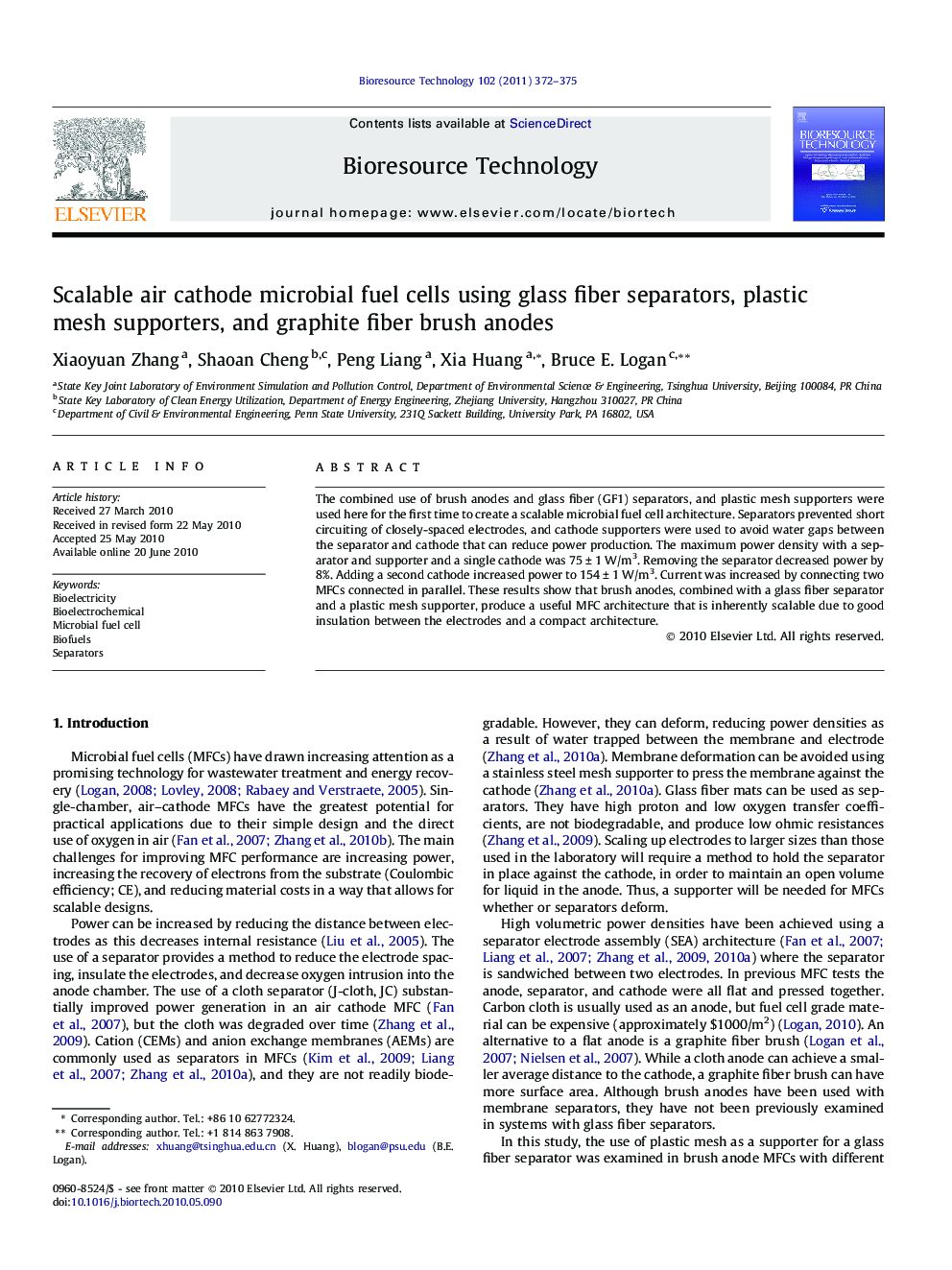| Article ID | Journal | Published Year | Pages | File Type |
|---|---|---|---|---|
| 682398 | Bioresource Technology | 2011 | 4 Pages |
The combined use of brush anodes and glass fiber (GF1) separators, and plastic mesh supporters were used here for the first time to create a scalable microbial fuel cell architecture. Separators prevented short circuiting of closely-spaced electrodes, and cathode supporters were used to avoid water gaps between the separator and cathode that can reduce power production. The maximum power density with a separator and supporter and a single cathode was 75 ± 1 W/m3. Removing the separator decreased power by 8%. Adding a second cathode increased power to 154 ± 1 W/m3. Current was increased by connecting two MFCs connected in parallel. These results show that brush anodes, combined with a glass fiber separator and a plastic mesh supporter, produce a useful MFC architecture that is inherently scalable due to good insulation between the electrodes and a compact architecture.
